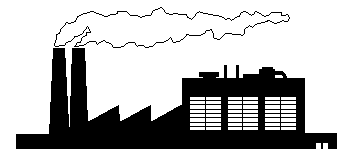|
Who would design, build or maintain a killing facility? |

No Abortion Mill in Erie! |
Testimony of Engineer Kurt Prufer on Crematorium Design
(March 5, 1946)
Q. Who apart from you participated in the construction of the furnaces?
A. From 1941-2, I constructed the furnaces. The technical drawings were done by Mr. Keller. The ventilation systems of the "Kremas" [crematoriums] were constructed by senior engineer Karl Schultze.
Q. How often and with what aim did you visit Auschwitz?
A. Five times. The first time at the beginning of 1943, to receive orders of the SS Command where the Kremas were to be built. The second time in spring 1943 to inspect the building site. The third time was in autumn 1943 to inspect a fault in the construction of a Krema chimney. The forth time at the beginning of 1944, to inspect the repaired chimney. the fifth time in September-October 1944, when I visited Auschwitz with the intended relocation [from Auschwitz] of the crematoriums, since the front was getting nearer. The crematoriums were not relocated, because there were not enough workers.
Q. Were you the sole Topf engineer in Auschwitz in spring 1943?
A. No, [senior engineer Karl] Schultze was with me in Auschwitz at the time. I saw personally about 60 corpses of women and men of different ages, which were being prepared for incineration. That was at 10 in the morning. I witnessed the incineration of six corpses and came to the conclusion that the furnaces were working well.
Q. Did you see a gas chamber next to the crematoriums?
A. Yes, I did see one next to the crematorium. Between the gas chamber and the crematorium there was a connecting structure.
Q. Did you know that in the gas chamber and in the crematoriums there took place the liquidation of innocent human beings?
A. I have known since spring 1943 that innocent human beings were being liquidated in Auschwitz gas chambers and that their corpses were subsequently incinerated in the crematoriums.
Q. Who is the designer of the ventilation systems for the gas chambers?
A. Schultze was the designer of the ventilation systems in the gas chambers; and he installed them.
Q. Why was the brick lining of the muffles so quickly damaged?
A. The bricks were damaged after six months because the strain on the furnaces was colossal.
Source: Kurt Prufer, senior engineer of Topf and Sohne, testifying in Erfurt, Germany. Quoted from the interrogation transcripts by Prof. Gerald Fleming from the University of Surrey, New York Times, (July 18, 1993). The Nizkor Project
Testimony of Engineer Karl Schultze on Crematorium Design
(March 1946)
Q. What was your personal part in these "Krema" building operation and what was Prufer's part?
A. Prufer was an expert. He designed and constructed these crematoriums and led the building operations in the concentration camps. I was responsible for the ventilation systems and for its air injection into the muffles. In specific instances, I led the installation operations personally. I personally led the installation work in Auschwitz crematoriums and gas chambers. For this purpose, I traveled to Auschwitz three times in 1943.
[...]
I did not know that in the crematoriums in Auschwitz-Birkenau innocent human beings were being liquidated. I thought criminals were being killed there who who had partly been sentenced to death because of the crimes they had committed against the German army in Poland and other occupied territories. I am a German and supported and am supporting the Government in Germany and the laws of our Government. Whoever opposes our laws is an enemy of the State, because our laws establish him a such. I did not act on personal initiative but as directed by Ludwig Topf. I was afraid of losing my position and of possible arrest.
Q. Your views do not really differ from the views of a Nazi.
A. No, I was not a member of the NSDAP [National Socialist German Workers Party]. I only respected and acted according to the laws of my country.
Source: Quoted from the interrogation transcripts by Prof. Gerald Fleming from the University of Surrey, New York Times, (July 18, 1993). The Nizkor Project
Testimony of Engineer Fritz Sander on Crematorium Design
(March 7, 1946)
I decided to design and build a crematorium with a higher capacity. I completed this project of a new crematorium in November 1942 - a crematorium for mass incineration, and I submitted this project to a State Patent Commission in Berlin.
This "Krema" was to be built on the conveyor belt principle. That is to say, the corpses must be brought to the incineration furnaces without interruption. When the corpses are pushed into the furnaces, they fall onto a grate, and then slide into the furnace and are incinerated. The corpses serve at the same time as fuel for heating of the furnaces. This patent could not yet be approved by the Main Patent Office in Berlin, because of its classification (as a state secret).
Q. Although you knew about the mass liquidation of innocent human beings in crematoriums, you devoted yourself to designing and creating higher capacity incineration furnaces for crematoriums - and on your own initiative.
A. I was a German engineer and key member of the Topf works and I saw it as my duty to apply my specialist knowledge in this way to help Germany win the war, just as an aircraft construction engineer builds airplanes in wartime, which are also connected with the destruction of human beings.
Source: Quoted from the interrogation transcripts by Prof. Gerald Fleming from the University of Surrey, New York Times, (July 18, 1993). The Nizkor Project